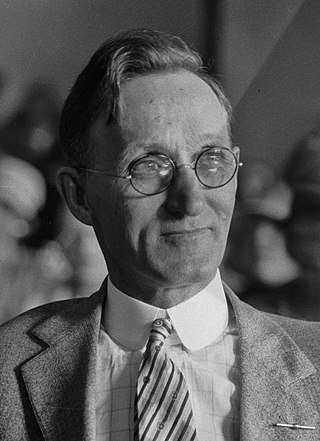
Abscam,sometimes written ABSCAM,was a Federal Bureau of Investigation sting operation in the late 1970s and early 1980s that led to the convictions of seven members from both chambers of the United States Congress and others for bribery and corruption. The two-year investigation initially targeted trafficking in stolen property and corruption of prominent business people,but later evolved into a corruption investigation. The FBI was aided by the United States Department of Justice and convict Mel Weinberg in videotaping politicians accepting bribes from a fictitious Arabian company in return for various political favors.

Joan Milke Flores was an American politician,who served as a member of the Los Angeles City Council for the 15th district from 1981 to 1993. A member of the Republican Party in a largely Democratic body,she also served as the first freshman president pro tem in half a century. Milke Flores ran for California Secretary of State in 1990 and for a U.S. House seat in 1992.

Charles Navarro Guarino was a Los Angeles City Council member between 1951 and 1961 and city controller from 1961 to 1977.

Guy Vernon Bennett was superintendent of schools in Pomona,a professor of education at the University of Southern California,and a Los Angeles city councilman from the 10th District from 1935 to 1951. He was defeated for reelection after seventeen years in office in the wake of his arrest on a morals charge. He was a Democrat.

Charles Emerson Downs was the first Los Angeles City Council member representing the 10th District after a new city charter went into effect in 1925. He was removed from office after just three months,however,when he was convicted of receiving a bribe from a developer who planned to construct a moving sidewalk in the Second Street Tunnel.

Isaac Fremont Hughes was an American miller,grocer,and businessman who was the first representative of Los Angeles City Council District 3 after a new city charter went into effect in 1925. He served for two years,until 1927.

Karl L. Rundberg was an American businessman and politician. He was notable as a Los Angeles City Council member between 1957 and 1965. He was convicted of accepting a bribe in 1967 when a member of the city's Harbor Commission and was placed on probation. The conviction was reversed by a higher court.

Ira J. McDonald was a Downey,California,attorney and member of the Los Angeles City Council between 1941 and 1945.

Delamere Francis McCloskey was a Canadian-born American attorney and politician,who represented the 1st District on the Los Angeles City Council from 1941 to 1945.
Ralph Inzunza is a former city councilman from San Diego. He was elected in March 2001 to represent City Council District 8. He resigned in July 2005 along with Councilman Michael Zucchet after both were convicted on federal corruption charges. The conviction against Zucchet was overturned on November 10,2005,citing lack of evidence. However,the convictions against the two co-defendants were upheld.
Thomas Jefferson Cuddy, known as T.J. Cuddy, nicknamed Tom, was a 19th-century police chief in Los Angeles,California,until bribery forced resignation,and member of the Los Angeles Common Council,the city's governing body. He served a six-month jail term for contempt of court.

Los Angeles's 13th City Council district is one of the fifteen districts in the Los Angeles City Council. It is currently represented by Democrat Hugo Soto-Martinez since 2022,after beating previous councilmember Mitch O'Farrell that year.

Roy Laurence Donley was a businessman who became a member of the Berkeley,California,Board of Park Commissioners and then the Los Angeles City Council,from 1931 to 1933.

James Stuart McKnight was a National Guard officer who served in World War I,an attorney and a member of the City Council in Los Angeles,California,in 1931 and 1932. He also served in the California State Assembly for the 75th district from 1915 to 1917.

Thomas Donald Shepard was an American politician who served as a member of the Los Angeles City Council between 1961 and 1967. He left office when he was convicted of receiving a bribe,and he served time in state prison.

Carl Ingold Jacobson was a City Council member from 1925 to 1933. He was tried on a morals charge,and then it was later shown that he was the victim of a frameup by local police authorities.

John Patrick Cassidy was a newspaperman and public relations practitioner who became a Los Angeles City Council member in District 12 between 1962 and 1967. Before and after his term he was a field deputy to two City Council members,and in 1967 he was briefly the head of public relations for the city's Recreation and Parks Department.

James B. Potter Jr. was a member of the Los Angeles City Council from 1963 to 1971. A sales manager for a tool company,when elected to the City Council he became its youngest member at age 31. He was defeated in 1971 amid controversy over development of a housing tract in the Santa Monica Mountains.

















